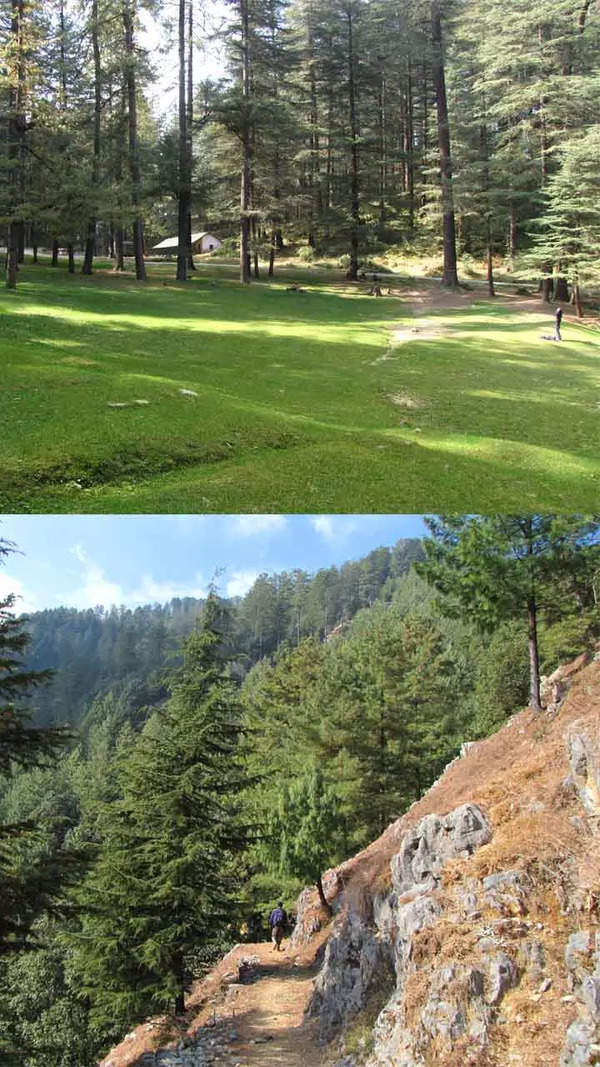- News
- City News
- bengaluru News
- Karnataka clears weeds in bid to reclaim 'Tiger Capital' tag
Trending Topics
Karnataka clears weeds in bid to reclaim 'Tiger Capital' tag

Amid the buzz on Karnataka set to reclaim the Tiger Capital status, the countdown for the release of the latest big cat population numbers has begun. The release will coincide with the commemoration of 50 years of Project Tiger.
BENGALURU: Amid the buzz on Karnataka set to reclaim the Tiger Capital status, the countdown for the release of the latest big cat population numbers has begun. The release will coincide with the commemoration of 50 years of Project Tiger.
Prime Minister Narendra Modi is set to announce the official numbers at an event in Mysuru in a week, and Karnataka is hopeful of emerging as the state with the maximum tiger population. Even as speculations do the rounds, state forest officials have attributed the salubrious population of big cats to several factors, including weed removal from reserves.
Losing out to Madhya Pradesh by a narrow margin in 2018, Karnataka, according to forest department officials, bounced back with its well-planned conservation efforts. Officials attributed the uptick in numbers to better management of reserves, particularly with a renewed focus on removing invasive weeds such as lantana, eupatorium and others.
Acknowledging the hardwork of department officials and staffers, principal chief conservator of forests (wildlife) and chief wildlife warden of Karnataka Rajiv Ranjan said the manual removal of lantana and other weeds has not only helped in regeneration of grasslands within the core area but also supported the population with a healthy prey base. "After the 2018 census and publishing of data, officials in all reserves made efforts to improve management of parks. We intensified our beat patrolling by restructuring routes and creating forest lines to safeguard them from wildfire. While the official figures are yet to be released, we are proud of our conservation efforts," Ranjan explained.
Clearing of the weeds has created more space for tigers and other carnivores and herbivores. "Under MNREGA, a lot of workers were deployed in Nagarahole and Biligiri Ranganathaswamy Temple (BRT) tiger reserves to manually remove invasive weeds such as lantana, parthenium and eupatorium. This has augmented our efforts in creating grasslands and supporting prey base for the tiger population," Ranjan explained.
Sources in the department said in Nagarahole alone, invasive weeds spread across 80 hectares of forest land in Antharasanthe range were removed during the past two-three years. Similarly, 600 hectares of forest area in Bandipur has been cleared of lantana and eupatorium. Interestingly, BRT reserve, which had about 35 to 40 percent of its forest area covered with lantana, has also made considerable progress.
Former principal chief conservator of forests (rtd) BJ Hosmath, who had previously served as field director of Bandipur-Nagarhole reserve, said because of weed infestation, the very ecosystem of the reserves is degenerating as they do not allow native species to come up.
Sanjay Gubbi, wildlife biologist at Holematti Nature Foundation in Chamarajanagar, said lantana is one of the worst invasive weeds. "It has been scientifically documented that lantana certainly affects plant communities and birds, impacting their diversity and abundance."
Prime Minister Narendra Modi is set to announce the official numbers at an event in Mysuru in a week, and Karnataka is hopeful of emerging as the state with the maximum tiger population. Even as speculations do the rounds, state forest officials have attributed the salubrious population of big cats to several factors, including weed removal from reserves.
Losing out to Madhya Pradesh by a narrow margin in 2018, Karnataka, according to forest department officials, bounced back with its well-planned conservation efforts. Officials attributed the uptick in numbers to better management of reserves, particularly with a renewed focus on removing invasive weeds such as lantana, eupatorium and others.
Acknowledging the hardwork of department officials and staffers, principal chief conservator of forests (wildlife) and chief wildlife warden of Karnataka Rajiv Ranjan said the manual removal of lantana and other weeds has not only helped in regeneration of grasslands within the core area but also supported the population with a healthy prey base. "After the 2018 census and publishing of data, officials in all reserves made efforts to improve management of parks. We intensified our beat patrolling by restructuring routes and creating forest lines to safeguard them from wildfire. While the official figures are yet to be released, we are proud of our conservation efforts," Ranjan explained.
Clearing of the weeds has created more space for tigers and other carnivores and herbivores. "Under MNREGA, a lot of workers were deployed in Nagarahole and Biligiri Ranganathaswamy Temple (BRT) tiger reserves to manually remove invasive weeds such as lantana, parthenium and eupatorium. This has augmented our efforts in creating grasslands and supporting prey base for the tiger population," Ranjan explained.
Sources in the department said in Nagarahole alone, invasive weeds spread across 80 hectares of forest land in Antharasanthe range were removed during the past two-three years. Similarly, 600 hectares of forest area in Bandipur has been cleared of lantana and eupatorium. Interestingly, BRT reserve, which had about 35 to 40 percent of its forest area covered with lantana, has also made considerable progress.
Former principal chief conservator of forests (rtd) BJ Hosmath, who had previously served as field director of Bandipur-Nagarhole reserve, said because of weed infestation, the very ecosystem of the reserves is degenerating as they do not allow native species to come up.
Sanjay Gubbi, wildlife biologist at Holematti Nature Foundation in Chamarajanagar, said lantana is one of the worst invasive weeds. "It has been scientifically documented that lantana certainly affects plant communities and birds, impacting their diversity and abundance."
Start a Conversation
FOLLOW US ON SOCIAL MEDIA
FacebookTwitterInstagramKOO APPYOUTUBE










